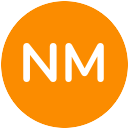7 Alternatives to Neural Blender: Other Similar AI-Powered Platforms for Automating Your Workflow
By Gregor K. published about 2022-12-29 06:07:17
Are you looking for a Neural Blender alternative? If so, you've come to the right place. In this article, we'll provide you with a list of websites similar to Neural Blender that offer similar features. We'll look at the features offered by each of these websites, so you can decide which one best fits your needs. Whether you're looking for a comprehensive tool for creating machine learning models or a more specialized solution for deep learning, we've got you covered. So, let's get started.
Neural Blender
Neural Blender is a powerful cloud-based platform for building and deploying advanced artificial intelligence and machine learning models. It provides a unified way to build, deploy and manage models from any programming language or framework, using advanced tools and APIs.
Features
- Cloud-based platform for building and deploying machine learning and AI models
- Support for a variety of programming languages and frameworks
- Automated model deployment and management
- Advanced tools and APIs for model building
Neural Blender Alternatives
TensorFlow
Both are open-source, used for deep learning and machine learning.
Neural Blender is a neural network visualization tool while TensorFlow is a library for numerical computation
Keras
Both are open-source and used for deep learning.
Neural Blender is a neural network visualization tool while Keras is a high-level neural networks API written in Python
PyTorch
Both are open-source and used for deep learning.
Neural Blender is a neural network visualization tool while PyTorch is a deep learning library for Python
Caffe
Both are open-source and used for deep learning.
Neural Blender is a neural network visualization tool while Caffe is a deep learning framework
MXNet
Both are open-source and used for deep learning.
Neural Blender is a neural network visualization tool while MXNet is a deep learning framework
Deeplearning4j
Both are open-source and used for deep learning.
Neural Blender is a neural network visualization tool while DL4J is a deep learning library for Java
Microsoft Cognitive Toolkit
Both are open-source and used for deep learning.
Neural Blender is a neural network visualization tool while CNTK is a deep learning library for Windows
Blender
Both Neural Blender and Blender are 3D creation tools.
Neural Blender specializes in using neural network technology to create photorealistic 3D images, while Blender offers a suite of 3D animation and modeling tools.
Neural Blender Head-To-Head
Neural Blender is a powerful online platform that helps you create, organize, and share visual data. It allows you to quickly take raw data and turn it into meaningful visuals that can be shared with colleagues and friends. In this article, we will compare Neural Blender with other popular websites to help you decide which one is right for your needs. We'll look at user experience, ease of use, features, pricing, and more to get an accurate assessment of how each website stacks up against the competition. By the end of this article, you should have all the information you need to make an informed decision about which website is best for your data visualization needs.
Neural Blender and Blender are both 3D animation software tools. However, there are several key differences between them. Neural Blenderâs main focus is on machine learning, allowing users to create animations based on data using artificial intelligence. In contrast, Blender is focused more on traditional 3D modeling and animation techniques. Neural Blender offers a modern user interface that allows users to quickly create animations by dragging and dropping elements onto a canvas. It also has a library of preset shapes and materials that can be used in an animation. On the other hand, Blender focuses more on traditional 3D modeling techniques, with an array of tools for creating complex models and environments. When it comes to rendering, Neural Blender uses a real-time lighting engine with real-time reflections and shadows while Blender utilizes its own modern ray tracing engine for realistic renders. Additionally, Neural Blender supports cloud rendering while Blender does not. Overall, both Neural Blender and Blender are powerful tools for creating 3D animations. However, their main difference lies in their focus: Neural blender emphasizes machine learning while Blender focuses on traditional 3D modeling tools.
History of Neural Blender
Neural Blender is a website that has been around since 2017. It was initially created for people to find answers to questions about artificial intelligence and machine learning. Over the years, it has grown to include more content and resources related to the field of AI. It now serves as a comprehensive resource for those interested in AI, including tutorials, articles, and tools.
Neural Blender Status
The Neural Blender website on online and reachable (last checked on 2025-04-23 01:00:54).
Comments
-

Neural Blender must be the most popular website for all the neurons out there!
2023-06-12 06:41:12 · -

-

If you're looking for an alternative to Neural Blender, check out the sites on this list!
2023-12-02 10:29:09 · -

-

-

If you're feeling overwhelmed with ideas, just use Neural Blender to help you organize them!
2024-03-08 01:40:09 · -

-

Wow, I didn't know there were so many websites that could blend your neurons!
2024-08-03 06:47:04 · -

-

Further Links
Trending Sites
Top Sites in Artificial Intelligence
Top Sites in Machine Learning
Top Sites in Deep Learning
Top Sites in Natural Language Processing
Top Sites in Neural Networks
Neural Blender
Neural Blender is a powerful cloud-based platform for building and deploying advanced artificial intelligence and machine learning models. It provides a unified way to build, deploy and manage models from any programming language or framework, using advanced tools and APIs.
Features
- Cloud-based platform for building and deploying machine learning and AI models
- Support for a variety of programming languages and frameworks
- Automated model deployment and management
- Advanced tools and APIs for model building
